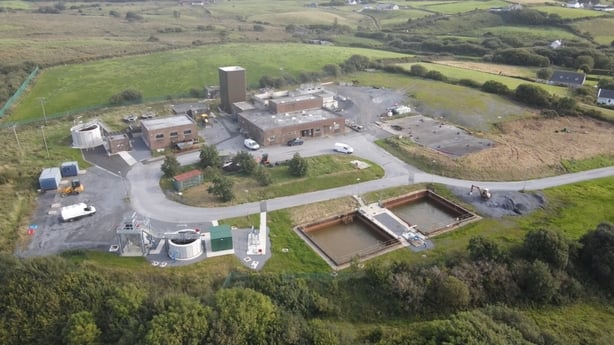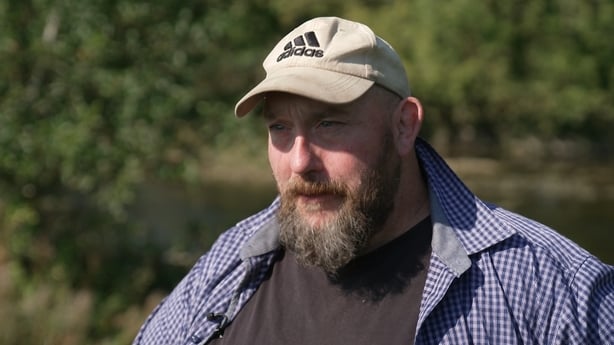Almost all drinking water plants audited by the Environmental Protection Agency in Ireland this year "require action to be taken," and just one in five were "operating satisfactorily," according to an analysis by Prime Time.
67 EPA audits of such plants were carried out so far in 2024. Prime Time examined the results as part of a report looking at increasing concerns about pollution linked to drinking water facilities.
The analysis found 97% of plants required action to be taken and just 19% plants were reported to be operating satisfactorily.
24 of the audits examined whether the plant alarm systems were functioning properly, to alert operatives to deteriorating water quality at the plants. None were found to operating correctly.
In 16 plants of 21 plants audited for "oversight by operational staff of plant performance trends", there was none.
Responding to the Prime Time's review of the the EPA audits, Uisce Éireann, which manages Ireland’s water treatment and production system, said about the follow-up actions up it was required to take, in all cases they "correspond with the EPA on the recommendations until the audit file is closed".
It also said that "the vast majority of Uisce Éireann customers are served by national oversight from the National Operations Management Centre (NOMC) which monitors data 24/7 from water treatment plants and will alert the operations teams where there is an issue".
"UÉ is aware that there is a significant amount of work required to reduce and remove these risks which result from decades of under investment in the water infrastructure."
However, Inland Fisheries Ireland (IFI) says drinking water plants are now emerging as a key threat to waterways. IFI is the state environment agency responsible for protecting, managing and conserving Ireland's inland fisheries and sea angling resources.
"We would have identified that water treatment plants are now having as much of an impact as the wastewater treatment plants are having" Barry Fox, deputy CEO of IFI, told Prime Time.
Since 2015, Uisce Éireann has been convicted 20 times on foot of prosecutions taken by IFI.
Of the 20 cases, seven related to water treatment plants, while the other 13 were for pollution from wastewater plants. A further two cases are pending this year.
In several recent cases, significant fish kills have been linked to discharges from the drinking water plants.
Some issues linked to subsequent fish kills and discharges were well flagged by the EPA in advance, but went unfixed.
In one such case, IFI secured a conviction against Uisce Éireann after a fish kill in the Ballymacraven river last year was linked to an overloaded water treatment plant in Ennistymon in Co Clare, released toxic sludge into the river.

The problem of overloading at the plant was highlighted in EPA audit in 2014.
It stated that "the plant was operating at 55% above its design capacity" and that Irish Water "must ensure measures are put in place so the plant is operated within its design capacity."
"It was a significant impact. We had a loss of over 2,000 fish - mostly brown trout - and that has a significant impact for local people who had fished that river and for the local river itself, the actual biodiversity within that," Mr Fox said.
The Ballymacraven river, joins the Inagh river just south of Ennistymon, running into a Special Area of Conservation (SAC), with protected fish species and habitats.
In its audit after the fish kill, the EPA found serious deficiencies at the plant, including "poor management and an absence of operational control of the sludge treatment processes at the plant."
After the 2014 audit, the Ennistymon plant had been put on EPA’s "remedial action list" for priority action by Uisce Éireann. However, the target date for the completion of upgrading works was repeatedly pushed out over the years.
Uisce Éireann stated that "a full upgrade of the water treatment plant is progressing".
Professor Fiona Regan of Dublin City University says that such long delays in addressing known problems is unacceptable.
"I do believe that Ballymacraven was an accident waiting to happen. To consider the fact that this was an issue almost 10 years ago and that nothing really has been done to improve the situation in between. That, to me, is a real failure."

In separate case in Co Cork in June this year, a major pollution event which killed 5,000 fish was caused by discharge from a water treatment plant, which had a negative EPA audit, showing multiple failures at the plant two years ago.
Uisce Éireann admitted releasing a purifying coagulant - polyaluminium chloride - from the plant into the River Allow.
"The River Allow was a devastating fish kill. It was nearly eight kilometres of river, thousands of fish dead," said according to Barry Fox, deputy CEO of Inland Fisheries Ireland.
"Fish that are key species under the Habitats Directive [were affected]. We've had a loss of huge amount of salmon, different types of lamprey and trout. We've also had a loss of a significant population of pearl mussel, which is a unique species that live in rivers in Ireland. Some of them live up to 130, 140 years of age."
It was the second discharge from the plant into a 'Special Area of Conservation’ (SAC) within a year, prompting the Minister for Environment, Eamon Ryan to summoned Uisce Eireann CEO Niall Gleeson to his office over the issue.
It emerged that accident which was caused by the discharge of a toxic chemical into the river, was not related to plant failures previously highlighted by the 2022 EPA audit.
According to IFI, they are now pursuing a prosecution over the River Allow fish kill against Uisce Éireann.
Even when there is no immediate evidence of a fish kill, pollution events can do significant damage to riverbeds and the surrounding habitats and disrupt recreational activities.
Last month as anglers on the River Suir at Holycross Co Tipperary were preparing for a fly fishing competition, they discovered "a grey sludge" in the water at a prized brown trout fishery spot.
The anglers immediately contacted IFI about the discharge.
Local angler Seamus Butler said while some dead fish were found downstream, the main concern was damage to the riverbed as a feeding ground for many fish species including spawning salmon, but particularly brown trout.
"The shore is a wild trout fishery: the trout sustain themselves. [But] if more of this goes on, that won't continue. And once it's gone, it's gone. You've lost the wild trout population," he said.

The loss of this fishery would resonate internationally, said Mr Butler.
"It's an unbelievably good wild trout fishery. You have folks coming here from all over Europe and America. It is the best wild brown trout fishery in Europe," he said.
Following an investigation, IFI confirmed that they are now preparing case for prosecution against Uisce Éireann in relation to the drinking water treatment plant at Killenyarda, Holycross.
Uisce Éireann said that given that the matter is under investigation, it cannot comment at this point.
Uisce Éireann also says that the latest EPA Drinking Water Report shows "that Ireland’s public drinking water supplies remain among the best in the world (99.7% compliance with microbiological and chemical standards). This is a result of the ongoing high levels of investment and improved operational measures being implemented by Uisce Éireann."
"Some of our water treatment plants need additional investment and we are working hard to bring all these plants fully up to modern standards. This can be a challenge in some areas due to the age of the infrastructure and decades of under-investment.
Oonagh Smyth and Colm Kirwan's piece on water infrastructure broadcasts on the Thursday 17 October edition of Prime Time at 9.35pm on RTÉ One.






